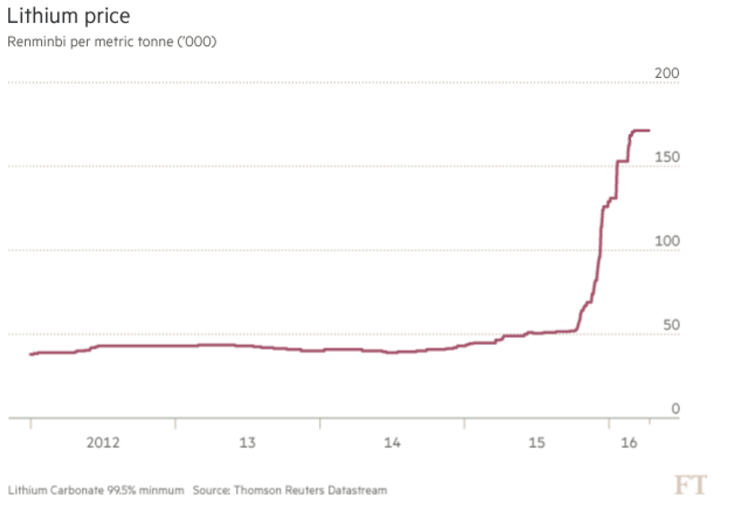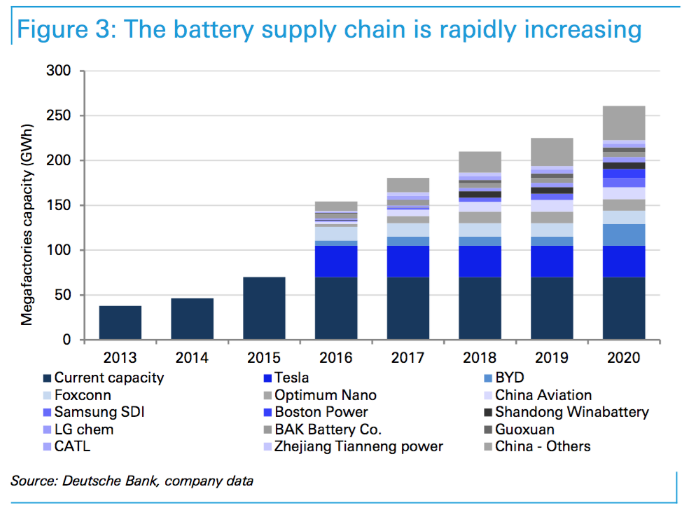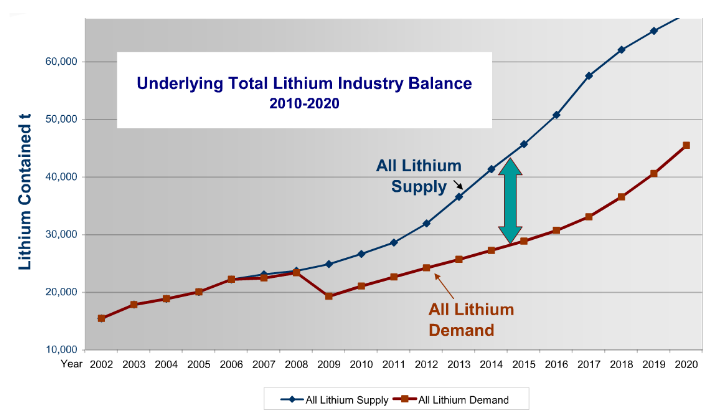Tesla and Lithium Demand Has LIT up This ETF
The price of lithium has soared over the past decade from less than 50,000 to over 150,000 renminbi per metric tonne, according to Thomson Reuters’ data. While some attribute the dramatic rise to nothing more than speculation, others are quick to point out that rising demand from electric vehicles and energy storage justifies the increase. The truth may lie somewhere in between, and investors interested in lithium should read beyond the headlines.

In this article, we’ll look at the lithium market and how one exchange-traded fund (ETF) has grown considerably in the face of rising prices.
Potential Lithium Demand
Lithium-ion batteries are commonly used in smartphones, laptops and other electronic devices, but the most significant driver of future demand will come from electric vehicles and energy storage applications. For example, the Tesla Model S requires 10,000 times as much lithium as a smartphone. The rise in renewable energy has also created significant demand for energy storage solutions on the part of both consumers and governments.

Demand for lithium has been difficult to forecast due to the evolving nature of these industries. In March, Tesla CEO Elon Musk told attendees of the Model 3 unveiling that the company would have to “absorb the entire world’s lithium-ion production” in order to produce half a million cars a year. The company expects to reach that mark by 2018 and produce a million vehicles by 2020, following the anticipated release of its $35,000 mass-market Model 3.
Expanding Lithium Supply
There is no shortage of lithium found in the earth’s crust, but extracting it can be costly and time consuming, so higher prices may not translate to a surge in supply. The industry could experience difficulty with expanding the lithium supply to meet Tesla’s projected demands over such a short time period. The market is also dominated by relatively few players that have been consolidating in recent years, which could limit new supply from coming online.

However, there’s little doubt that the lithium market appears oversupplied given its current demand. These dynamics are being exacerbated by plans to expand production at China’s Tianqi Lithium with a $300 million processing plant, as well as a rumored plan to double output from the big Greenbushes lithium mine in the South West region of Western Australia. TRU Group analysts believe this could lead to a significant oversupply in the market through 2020.
There are relatively few ways for investors to gain exposure to the lithium market, which is why the Global X Lithium ETF (LIT B-) has become extremely popular. Since the beginning of the year, the ETF has risen nearly 20%, and attracted more than $57 million in net inflows. These are impressive numbers given that the ETF has just $106 million in assets under management and charges a relatively lofty expense ratio of 0.77%.
The ETF invests at least 80% of its total assets in securities of companies that are economically tied to the lithium industry, including those engaged in lithium mining and lithium battery production. The fund’s top holdings include FMC Corp (FMC) with a 21.5% weighting, Quimica Y Minera Chile (SQM) with a 12.5% weighting, and Orocobre Ltd. (OROCF) with a 7% weighting. The fund has an average of $8 billion in market capitalization and a beta coefficient of 1.25 compared to the S&P 500 index.
Investors should keep in mind several key risk factors before investing in the lithium ETF. In addition to its relatively high-expense ratio, the fund holds just 28 stocks with about 70% of its assets in the top ten holdings. FMC Corp., its largest holding, is a diversified chemical company serving a multitude of markets, which means that it may not correlate directly with the price of lithium – and the same goes for many of the ETF’s other holdings.
The Bottom Line
Lithium prices have soared over the past decade as demand for batteries has accelerated. With Tesla launching new electric vehicles and energy storage demand on the rise, some investors are confident that lithium could become the ‘new oil.’ Other analysts are quick to point out that lithium supply has been on the rise, and demand is contingent on these lofty projections actually materializing. Investors should consider these details when deciding to invest in the space through ETFs like the Global X Lithium ETF.
